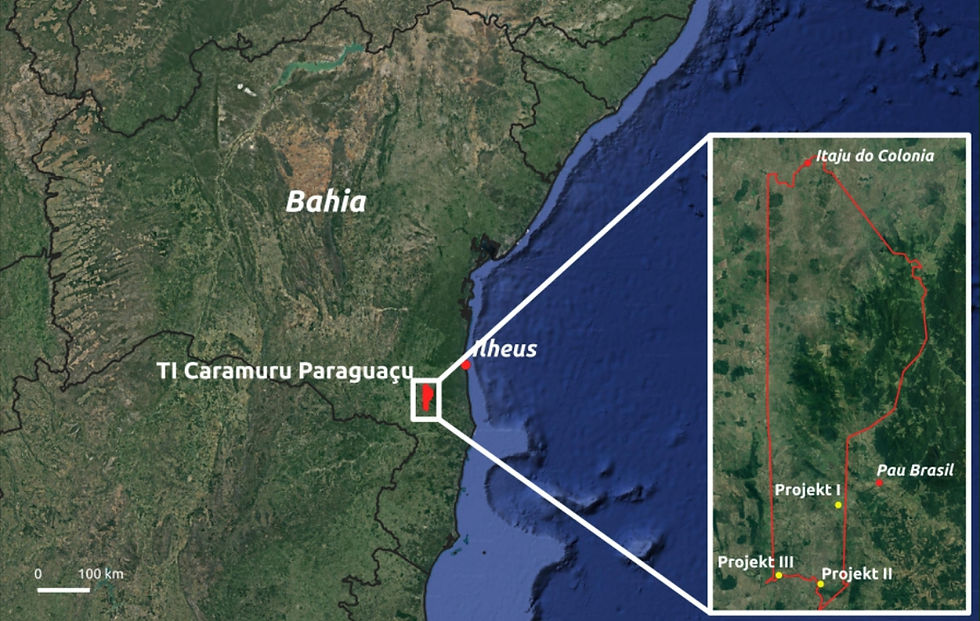
Biologist Christian and wildlife photographer Patrick from AMAP visited the Pataxó HãHãHãe in the Caramuru Paraguaçu reserve last week. The focus was on getting to know the community through many conversations and interviews with indigenous people. AMAP has been supporting the Pataxó HãHãHãe community since 2023. Together with the Pataxó HãHãHãe, AMAP will develop projects that improve the livelihoods of the community and enable biodiversity to return to the reserve.

The Caramuru Paraguaçu Reserve is located in the south of Bahia, in the Corredor Central of the Mata Atlântica, the Atlantic Rainforest. It is bordered to the north by the Rio Cachoeira and to the south by the Rio Pardo. The “reconquest” of the native land only took place in the 1980s, after the indigenous peoples' claim was recognized by the Supreme Court. However, it was not until 2012 that the last old property titles were annulled and the farmers concerned were compensated.

Decades of excessive use by cattle grazing led to a highly degraded natural area. Ecosystem functions were severely damaged and biodiversity was lost. Many indigenous families adopted this form of agriculture due to a lack of financial resources and pressure from the government. The result is a picture of a deforested terra indigena that is rather atypical for Brazil. The indigenous people are well aware of this fact, but as they lack both knowledge and financial resources, cattle grazing with small-scale subsistence farming structures continues to dominate.

AMAP supports the Pataxó HãHãHãe in establishing agroforestry systems, such as cocoa forests, in order to create biodiversity-friendly income opportunities and restore ecosystem functions. This should enable the return of biodiversity in the long term and improve the livelihoods of the indigenous community.

Even in the global context, the involvement of indigenous communities such as the Pataxó HãHãHãe is essential for achieving the Paris climate protection goals. Indigenous territories are often the last remaining intact forest islands, but degraded territories with subsequently recognized land rights also have a higher reforestation rate than comparable areas. Indigenous communities in Brazil therefore have a key role to play in mitigating and adapting to climate change.
Comments